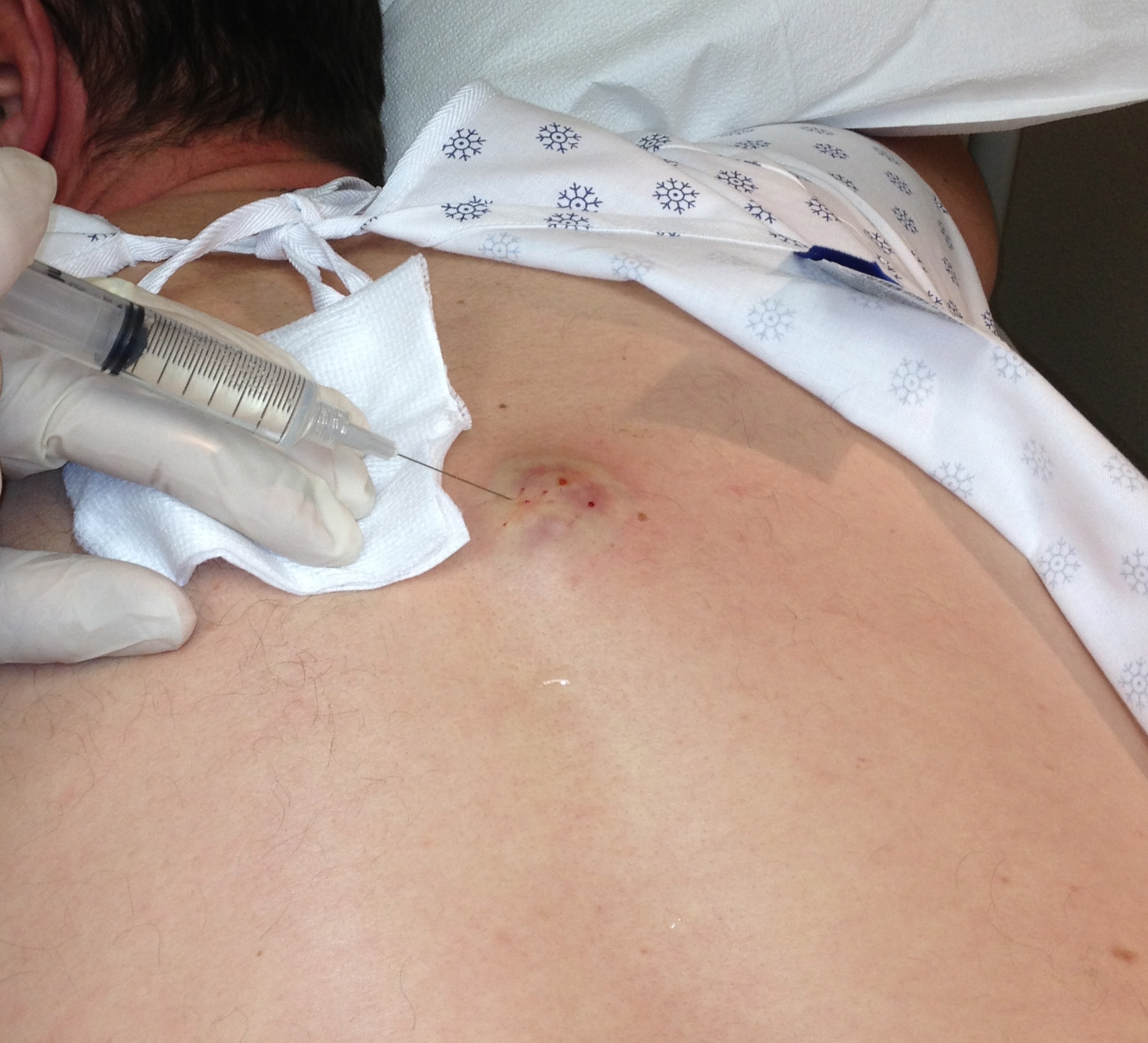Incision And Drainage Of Abscesses - Abu Dhabi - Dubai
Incision and drainage (I&D) is a common procedure used to treat abscesses. An abscess is a localized collection of pus, which is a thick fluid composed of dead tissue, white blood cells, and bacteria. The goal of an I&D procedure is to drain the pus from the abscess cavity, remove any dead tissue or debris, and promote healing.
Here's a general overview of the steps involved in performing an incision and drainage procedure for an abscess:
- 1. Preparation: The patient is positioned comfortably, and the area around the abscess is cleaned with an antiseptic solution to reduce the risk of infection.
- 2. Anesthesia: Local anesthesia is typically used to numb the area around the abscess. This helps minimize pain during the procedure. In some cases, a sedative or general anesthesia may be used, especially if the abscess is large or in a sensitive area.
- 3. Incision: A small incision is made over the abscess using a scalpel or a specialized tool called a lancet. The incision is usually made at the point of maximum fluctuance, which is where the abscess feels the softest and most fluid-filled. The incision should be adequate to allow thorough drainage of the pus.
- 4. Drainage: Once the incision is made, the healthcare provider may gently press on the abscess or use a pair of forceps to help break up any loculations or pockets of pus. This facilitates the drainage of the abscess cavity. The pus is typically collected in a sterile container or absorbed with sterile gauze.
- 5. Irrigation: After the initial drainage, the abscess cavity is usually irrigated with a sterile saline solution or an antiseptic solution to help remove any remaining pus, debris, or bacteria. This helps decrease the risk of reinfection.
- 6. Packing or closure: In some cases, the incision is left open to allow the abscess cavity to continue draining. Sterile packing material, such as gauze or a drain, may be inserted into the abscess cavity to facilitate ongoing drainage and prevent premature closure. Alternatively, if the abscess is small and the wound edges can be easily approximated, the incision may be sutured closed.
- 7. Dressing: The incision site is covered with a sterile dressing to protect it from contamination and promote healing. The dressing should be changed regularly to maintain a clean environment.
- 8. Aftercare: The patient is typically prescribed antibiotics to help clear any remaining infection. Pain medications and instructions on wound care and follow-up appointments are also provided. It's essential to follow the healthcare provider's instructions regarding wound care and take any prescribed medications as directed.
It's worth noting that the above steps are a general guide, and the exact procedure may vary depending on the location and size of the abscess, as well as the healthcare provider's preference and the patient's individual needs. It's always best to consult with a qualified healthcare professional for specific advice and guidance on any medical procedure.

